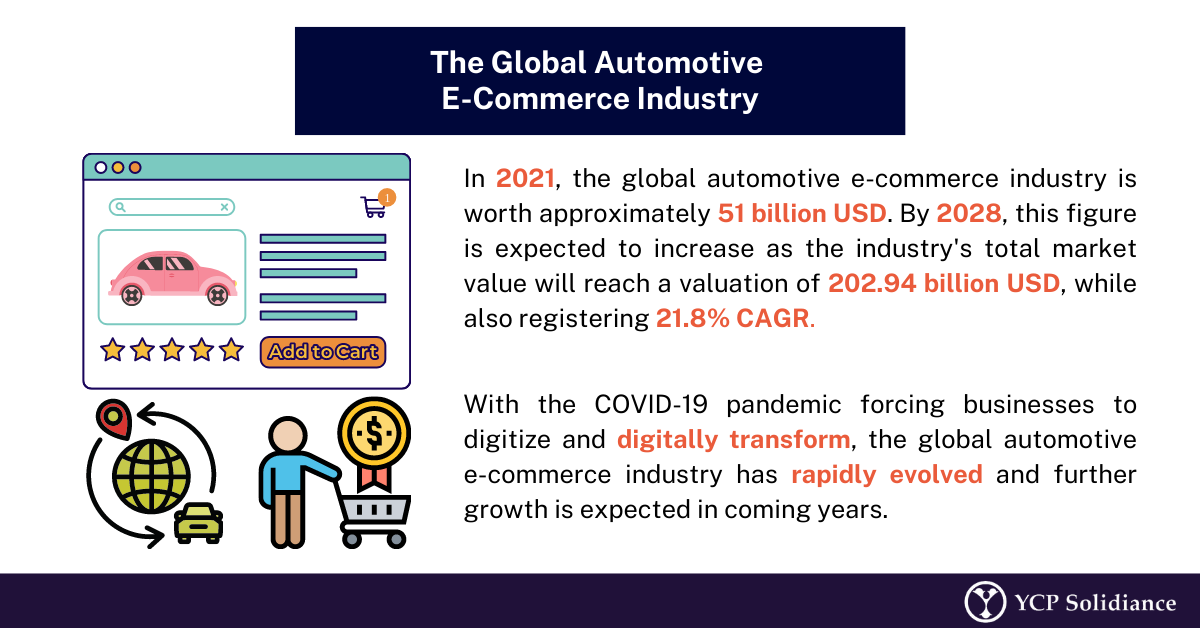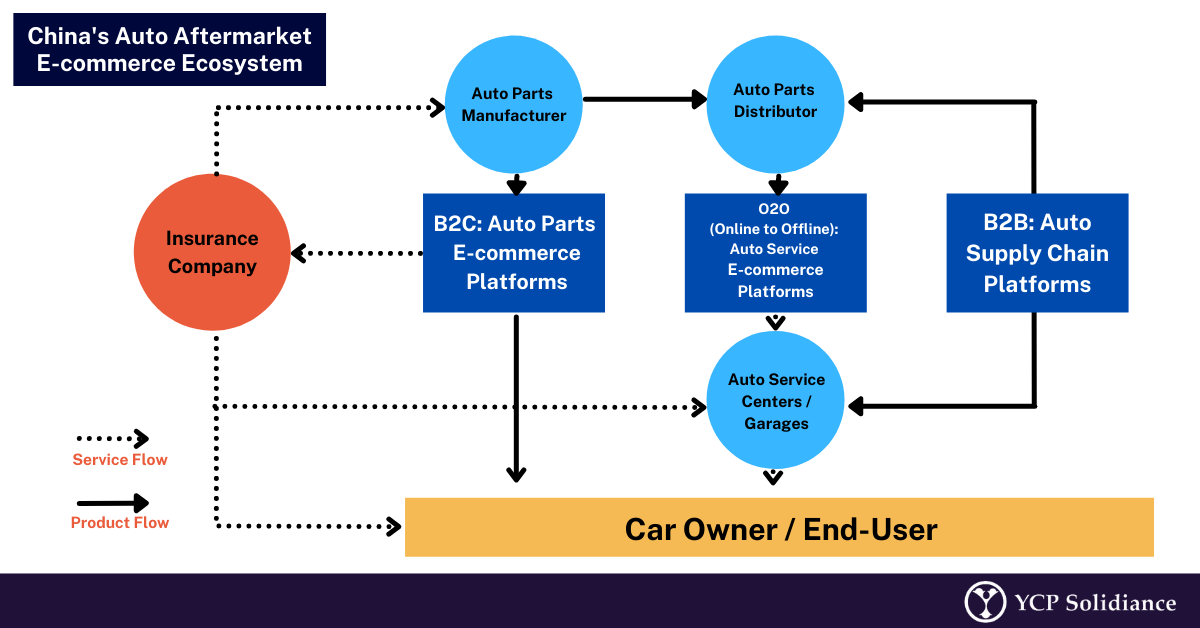According to data from a Fortune Business Insights report, the global automotive e-commerce industry is set to experience staggering growth in the coming years. Specifically, from 2021 to 2028, the sector’s total market value is forecasted to increase from 51.04 billion USD to 202.94 billion USD, while also registering a compound annual growth rate (CAGR) of 21.8%.
In the context of the entire automotive e-commerce industry, a key driver for growth has been the availability and accessibility of auto components and parts to consumers. With the COVID-19 pandemic continuing to encourage increased online activity, more consumers are now experimenting with sourcing auto parts from digital spaces. 
China As a Blueprint
When analyzing the Asian auto component e-commerce segment, China’s auto aftermarket e-commerce ecosystem immediately comes to mind as it has evolved at a much faster rate when compared to other markets. In the AutoCare Association’s 2022 Auto Care Factbook—which featured sections developed by YCP Solidiance—research showed that the success of China’s auto components e-commerce market was due in large part to the existing structure in place.
By prioritizing Business-to-Consumer (B2C), Online to Offline (O2O), and Business-to-Business (B2B) relations, the industry has effectively involved several relevant stakeholders, such as workshops, garages, and auto parts manufacturers and distributors. Through the integration of such parties, businesses both big and small have been able to properly transition and adapt to the rapid digitalization of the auto component industry.

Growth Extending Across Asia
The Southeast Asian region has also experienced a positive influx of auto component e-commerce activity. As reported by Tech Crunch, Singaporean-founded automotive marketplace Carro recently announced that it had raised 360 million USD in its Series C, which propelled the company to reach unicorn status—a term used to describe start-ups reaching a valuation of a billion USD or more.
Meanwhile, Malaysian-based online auto component portal SpareXHub is also finding domestic success. This service provides second-hand, genuine automotive spare parts to three main groups: (1) post-warranty vehicles and classic car stockists, (2) independent workshops and garages, and (3) retail customers. By specializing in the re-sale of hard-to-source genuine parts through a digital medium, SpareXHub has managed to carve a niche that attracts consumers from all around the world.
As the global automotive industry is projected to grow at a rapid rate, the role of the auto component e-commerce segment will be imperative in sustaining the industry’s success. Consumers who digitize and activate online will need access to readily available auto components. Thus, the need for auto component e-commerce services is evident and businesses like Carro and SpareXHub are set to benefit. For as long as the automotive industry remains busy, expect continued growth for auto components e-commerce marketplaces throughout Asia.
For more insight and further updates on the growth of the auto component e-commerce segment in Asia, subscribe to our newsletter here.







